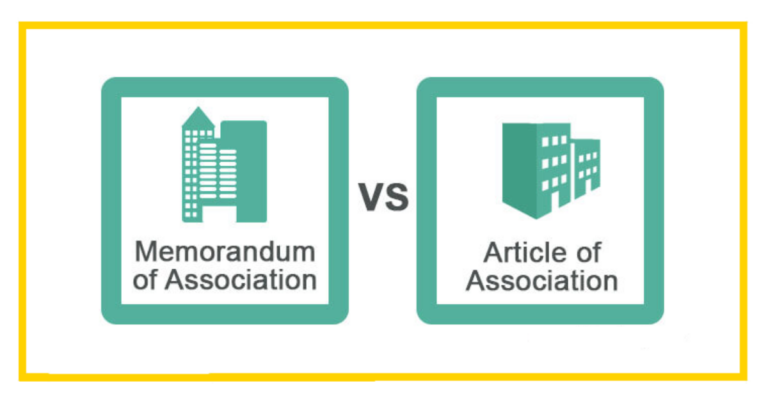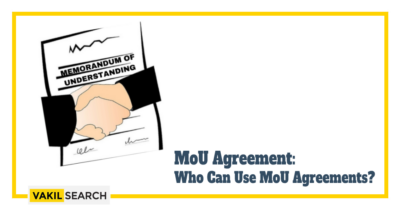This memorandum of understanding ("MoU") sets forth the terms and conditions between [Party A] and [Party B] and is effective as of [Date].
1. PURPOSE
The purpose of this MoU is to establish an understanding between the Parties regarding the cooperative provision of [insert service/product]. [Party A] and [Party B] agree to work together in good faith to develop a [insert service/product] that meets the needs of their customers.
2. DEFINITIONS
- “Confidential Information” means any information or material that has or could have commercial value or other utility in the business in which [Party A] or [Party B] is engaged. If confidential information is in written form, the disclosing party shall label or stamp the materials with the word “Confidential” or some similar warning. If confidential information is transmitted orally, the disclosing party shall promptly provide a writing indicating that such oral communication constituted confidential information.
- “Disclosing Party” means the party disclosing confidential information under this memorandum of understanding.
- “Intellectual Property Rights” means all patent rights, copyright rights, mask work rights, moral rights, rights of publicity, trademark, trade dress and service mark rights, goodwill, trade secret rights and other intellectual property rights as may now exist or hereafter come into existence, and all applications therefore and registrations, renewals and extensions thereof, under the laws of any state, country, territory or other jurisdiction.
3. SCOPE OF MUTUAL UNDERSTANDING
The parties understand and agree that the confidential information disclosed pursuant to this MoU is a trade secret of the disclosing party and that the disclosing party wishes to maintain the confidentiality of such information to protect its competitive advantage. The parties agree to enter into a confidential relationship concerning the disclosure of certain proprietary and confidential information (“confidential information”).
4. RESPONSIBILITIES OF PARTY A
Party A shall:
- Develop, produce and/or market [insert service/product];
- Sell [insert service/product] to customers; and
- [Add any additional responsibilities of Party A.]
5. RESPONSIBILITIES OF PARTY B
Party B shall:
- Develop, produce and/or market [insert service/product];
- Sell [insert service/product] to customers; and
- [Add any responsibilities of Party B.]
6. OWNERSHIP
- Party A shall own all rights, titles and interests in and to all [insert type of IP] developed in whole or in part by Party A pursuant to this MoU (“Party A IP”). Party A hereby grants to Party B a [non-exclusive/exclusive] [royalty-free/royalty-bearing] license to use Party A IP solely for the purpose of performing its obligations under this memorandum of understanding.
- Party B shall own all rights, titles and interests in and to all [insert type of IP] developed in whole or in part by Party B pursuant to this memorandum of understanding(“Party B IP”). Party B hereby grants to Party A a [non-exclusive/exclusive] [royalty-free/royalty-bearing] license to use Party B IP solely for the purpose of performing its obligations under this MoU.
- Except for the licenses expressly granted in this Section 6, nothing contained in this memorandum of understanding shall be deemed to grant either Party any right, title or interest in or to the other party’s confidential information or IP.
Click here to know about: MOU Format
7. CONFIDENTIALITY
- Obligations: The Parties agree to hold and maintain the confidential information in strictest confidence for the sole and exclusive benefit of the disclosing party. The receiving party shall carefully restrict access to confidential information to employees, contractors and third parties as is reasonably required and shall require those persons to sign nondisclosure restrictions at least as protective as those in this memorandum of understanding. The Receiving party shall not, without the prior written approval of the disclosing party, use for receiving party’s benefit, publish, copy, or otherwise disclose to others, or permit the use by others for their benefit or to the detriment of the disclosing party, any Confidential Information. The receiving party shall return to the disclosing party any and all records, notes, and other written, printed, or tangible materials in its possession pertaining to confidential information immediately if the disclosing party requests it in writing.
- Exceptions. Receiving party’s obligations under this Section shall not apply to information that is:
(i) publicly known at the time of disclosure or subsequently becomes publicly known through no fault of the receiving party;
(ii) discovered or created by the receiving party before disclosure by disclosing party; (iii) learned by the receiving party through legitimate means other than from the disclosing party or disclosing party’s representatives; or
(iv) is disclosed by the receiving party with the disclosing party’s prior written approval.
Remedies: The receiving party recognizes that the confidential information is a valuable, special and unique asset of the disclosing party. The receiving party agrees that any breach of this Section 7 may cause irreparable injury to the disclosing party and that, in addition to any other remedies that may be available, in law, in equity or otherwise, the disclosing party shall be entitled to obtain injunctive relief against the breach or threatened breach of this Section 7.
8. TERM AND TERMINATION
- This MoU and the licenses granted herein shall commence on the date of this MoU and shall continue for a period of [insert number] years.
- Either party may terminate this memorandum of understanding for any reason, or no reason, upon [insert number] days’ prior written notice to the other party.
- Upon termination of this MoU, the confidentiality provisions of this MoU shall survive the termination of this MoU and continue in full force and effect.
9.MISCELLANEOUS
- This memorandum of understanding constitutes the entire agreement between the parties with respect to the subject matter hereof and supersedes and replaces all prior or contemporaneous understandings or agreements, written or oral, regarding such subject matter.
- If any provision of this memorandum of understanding is found by a court of competent jurisdiction to be invalid or unenforceable, the parties nevertheless agree that the court should endeavor to give effect to the parties’ intentions as reflected in the provision, and the other provisions of this MoU remain in full force and effect.
- This memorandum of understanding is binding upon and shall insure to the benefit of the parties and their respective successors and permitted assigns.
- Nothing in this memorandum of understanding shall be construed as creating a partnership, joint venture or an agency relationship between the parties.
- This memorandum of understanding may be amended only in writing and signed by both parties.
- This memorandum of understanding shall be governed by the internal laws of the [Country] without giving effect to its conflict of laws principles.
- The parties agree that any dispute arising out of or relating to this memorandum of understanding shall be brought exclusively in the [Courts of Country], and the parties hereby irrevocably submit to the personal jurisdiction of such courts.
- The headings in this MoU are for reference only and shall not be used to interpret or construe this MoU.
- The parties agree that any notices under this MoU shall be in writing and shall be deemed given when received if personally delivered; when receipt is electronically confirmed, if transmitted by facsimile or email; the day after it is sent, if sent for next day delivery by recognized overnight delivery service; and upon receipt, if sent by certified or registered mail, return receipt requested.
- This MoU may be executed in counterparts, each of which shall be deemed an original, but all of which together shall be deemed to be one and the same agreement. A signed copy of this MoU delivered by facsimile, email or other means of electronic transmission shall be deemed to have the same legal effect as delivery of an original signed copy of this MoU.
- Severability: If any provision of this memorandum of understanding is held to be invalid or unenforceable, such provision will be amended and the remaining provisions will be enforced.
- Waiver: The failure of either party to enforce any provision of this memorandum of understanding will not be construed as a waiver of such provision.
- Indemnification: [Name of service provider] will indemnify and hold harmless [name of organization from and against any and all claims, losses, liabilities, and expenses arising out of or in connection with the provision of services under this memorandum of understanding.
- The parties agree that they are independent contractors. Nothing contained in this MoU shall be deemed to constitute either party a partner, joint venture or employee of the other party for any purpose. This MoU and each party’s obligations shall be binding on the representatives, assigns and successors of such parties. Each party has signed this MoU through its authorised representative.
Contents of an MOU
-
Introduction:
– The MOU typically starts with a formal introduction, stating the names and details of the parties involved. It may also include the date of the agreement.
-
Purpose and Objectives:
– Clearly defined objectives and the purpose of the MOU are outlined. This section specifies the collaborative goals the parties aim to achieve.
-
Scope of Work:
– The document details the specific tasks, responsibilities, and activities that each party agrees to undertake. This helps in clarifying the roles and expectations.
-
Duration and Termination:
– The MOU specifies the timeframe for which the agreement is valid. It may also outline conditions under which either party can terminate the MOU before the agreed-upon duration.
-
Financial Terms:
– If applicable, the MOU may include financial terms, such as funding arrangements, cost-sharing mechanisms, or any financial commitments from the parties involved.
-
Confidentiality:
– Parties often include clauses regarding the confidentiality of information shared during the collaboration. This ensures that sensitive data remains protected.
-
Governing Law:
– The document may specify the jurisdiction and laws that will govern the MOU. This is particularly important for agreements involving parties from different regions or countries.
-
Dispute Resolution:
– In case of disagreements or disputes, the MOU may outline the process for resolution, whether through negotiation, mediation, or other methods.
-
Responsibilities of Each Party:
– Specific duties and responsibilities of each party are clearly defined. This includes any resources or contributions expected from each party.
-
Signatories:
– The MOU is signed by the authorized representatives of each party. Their names, titles, and signatures are included in this section.
What are the Uses of MOUs?
-
Business Collaborations:
– Businesses often use MOUs to establish partnerships, joint ventures, or collaborations with other companies. This may include agreements for research and development, marketing, or distribution partnerships.
-
Government Agreements:
– Governments use MOUs for inter-agency collaborations, international agreements, or partnerships with private entities. These agreements can cover various sectors such as trade, defense, or environmental cooperation.
-
Nonprofit Collaborations:
– Nonprofit organizations may use MOUs to formalize partnerships with other nonprofits, businesses, or government agencies. This helps in coordinating efforts for social, environmental, or community-based initiatives.
-
Educational Partnerships:
– Educational institutions use MOUs to establish partnerships with other schools, colleges, or universities. This can include student exchange programs, collaborative research projects, or joint academic initiatives.
-
Research Collaborations:
– MOUs are commonly used in the research sector to outline collaborations between research institutions, scientists, or academic researchers. These agreements help define the scope of joint research projects.
FAQs on Memorandum of Understanding
What is the MOU agreement between two partners?
An MOU between two partners is a formal document outlining the terms and conditions of their collaboration. It specifies the goals, responsibilities, and other details agreed upon by both parties.
Why would two parties create a MOU?
Parties create an MOU to establish a framework for collaboration without entering into a full-fledged contract. It helps in clarifying expectations, defining roles, and outlining the purpose of the collaboration.
Is MOU a legal agreement in India?
While an MOU is not a legally binding contract, it is considered a formal agreement. Its legal standing may depend on the language used in the document and the intention of the parties involved.
What are the rules for signing MOU?
The rules for signing an MOU include ensuring that authorized representatives of each party sign the document. The terms and conditions should be clearly understood, and the MOU should be drafted in a way that reflects the mutual consent of all parties.
Read More:











